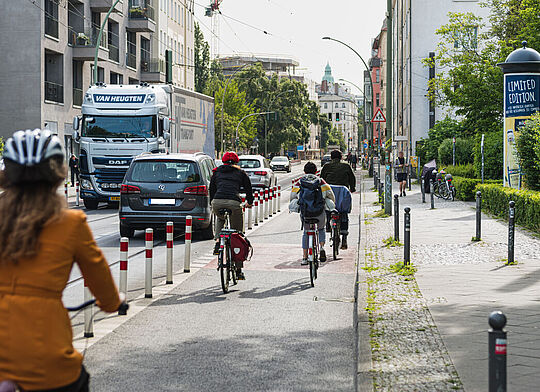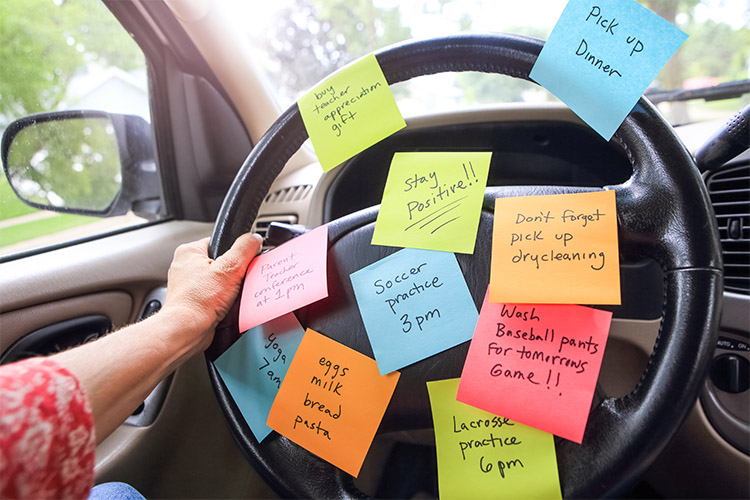The State of California has allocated to Cupertino a Regional Housing Needs Allocation (RHNA) target of 4,588 new homes to be built by Jan 31, 2031. Santa Clara County cities combined have a RHNA target of building about 130,000 new homes by 2031*.
Car ownership in Santa Clara County, CA is 2 cars per household on average**. That means 260,000 more cars will be added to our county in the next seven years. To help you visualize that, 260,000 cars bumper to bumper would cover a distance from Los Angeles, California, to Portland, Oregon. Are we ready for 260,000 more cars?
A Rapid Rise in Cars Over the Next Seven Years
Cities in Silicon Valley have seen a steady increase in car congestion over the past 50 years. Sitting in traffic for 40 minutes to travel 10 miles to your office is routine for most of us. Navigating a long line of impatient parents in cars to drop off our kids at school is an everyday inconvenience. Now imagine your office commute, school drop-off, and even a simple grocery trip getting even more congested with more cars, more traffic jams, and more car exhaust to breathe. That’s our future – unless we look at our city streets with fresh eyes.
Adding more car lanes has been proven not to help***. Our freeways have gone from 3 to 4 and 5 lanes yet still experience daily gridlock. The only solution is to divert some of that car traffic to other modes of transportation like walking, cycling, and transit. Seven years is a very short window in city planning and it will require an all-hands-on-deck response to create a multi-modal transportation solution that diverts some of that anticipated car traffic to pedestrians, cyclists, and transit users.
Any Solution Will Need to Include a Biking Network

Bikes – especially e-bikes – are a particularly excellent solution because they provide the fastest, most seamless Point A to Point B connectivity after cars. They allow for flexible, fast commuting with multiple stops like home → childcare → school → office → grocery store → home which transit cannot match. They can carry children, pets, and groceries. Ebikes allow office workers to arrive fresh and professional – without needing a shower. Any transportation solution to replace some of those 260,000 cars will need to include a comprehensive bike network.
The catch of course, is that for a bike network to be truly used, it needs to be connected and protected all the way, so that cyclists feel safe from the minute they leave their home to the minute they arrive at their destination.
The target users for bike lanes are our moms, children, and seniors, not expert riders. Expert riders know how to share the road with cars. They are also a small proportion of the population. If we really want to take cars off the road, we have to build bike lanes that are safe to use by our moms, children, and seniors. If we can make it safe for them, it will be safe for everyone.
Every cyclist and pedestrian you see is one less car contributing to traffic. With the imminent increase of 260,000 cars in the next seven years, we can’t afford to wait. It’s time to invest in the infrastructure needed to make walking, biking, and using public transit as safe and convenient as driving.
Data shows that 50 percent of trips in urban environments are three miles or less in length****. A large number of these short-hop trips can be done by walking or biking, if we can create a fully connected end-to-end network of sidewalks and protected bike lanes – north to south and east to west.
For the other 50 percent of trips that are longer than 3 miles, ebikes can have a huge impact. For trips up to 10 miles long, riding an ebike already takes the same or less time than driving. Ebikes can become faster and more enjoyable than cars if we create an intra-city network of bike superhighways, creek trails, and protected bike lanes on major thoroughfares like Stevens Creek Blvd, De Anza Blvd, El Camino Real, Foothill Blvd, Homestead Rd, and Bollinger Rd.

Image courtesy simplestepsbetterair.org
Every cyclist and pedestrian you see on the road is one less car sitting in traffic. As we add 260,000 cars over the next seven years, we don’t have much time to prepare. We need to start building the infrastructure now to make it easier, safer, and more enjoyable to walk, bike, and use transit in Cupertino and Santa Clara County. Can we be ready in time? Share your thoughts with us!
Sources
* https://siliconvalleyathome.org/resources/regional-housing-need-allocation-rhna/
** https://datausa.io/profile/geo/santa-clara-county-ca/#car-ownership
*** https://www.nytimes.com/2023/01/06/us/widen-highways-traffic.html
